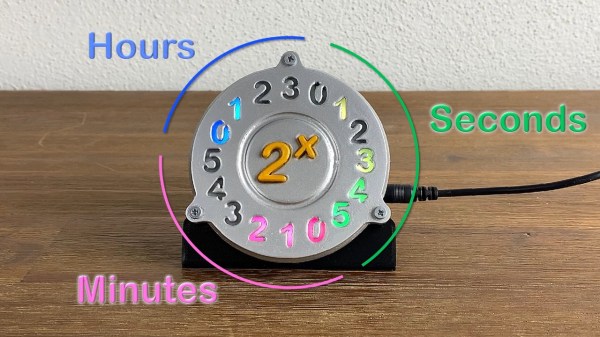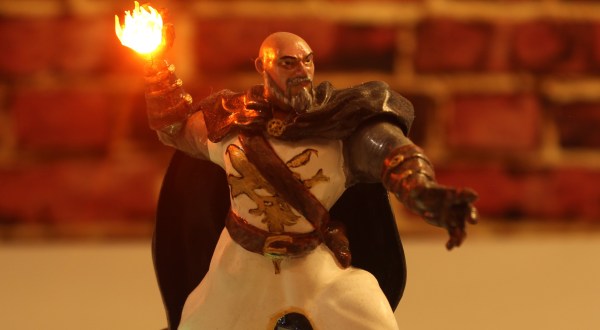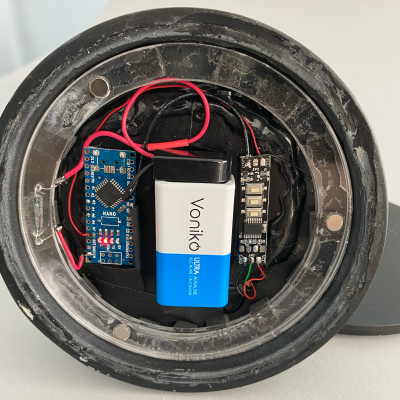Should a clock be round? Depends on the style of clock, we suppose. After all, we wouldn’t expect to see a digital clock with a round readout just for fun. But a binary clock — that’s another animal altogether. Whereas [JohnThinger] made just a few weeks back a linear binary clock using an RGB LED strip and an ATtiny, he decided it would look much better in the round.
Before you go decrying the fact that there are numbers other than 1 and 0 on the thing, those are simply the power of two by which one must multiply to get the time. And naturally, it’s done in three phases, with the yellow-green numbers representing the seconds, the pink-red representing minutes, and the blue standing for the current hour. No, the point is not to make life easier. But it’s a good-looking clock, no?
Just as before, an ATtiny85 is the brain, with an RTC chip and an oscillator to keep time. But now, the display involves negative space 3D-printed numbers and an RGB LED ring. Be sure to check it out after the break.
Continue reading “Circular Binary Clock Uses The Power To Tell Time”












